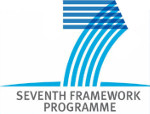The potential of discrimination methods in a high pressure xenon TPC for the search of the neutrinoless double-beta decay of Xe-136
Iguaz, F.J. (Universidad de Zaragoza) ; Aznar, F. ; Castel, J.F. (Universidad de Zaragoza) ; Cebrián, S. (Universidad de Zaragoza) ; Dafni, T. (Universidad de Zaragoza) ; Galán, J. ; Garza, J.G. ; Irastorza, I.G. (Universidad de Zaragoza) ; Luzón, G. (Universidad de Zaragoza) ; Mirallas, H. ; Ruiz-Choliz, E. (Universidad de Zaragoza)
Resumen: In the search for the neutrinoless double beta decay of 136Xe, a high pressure xenon time projection chamber (HPXe-TPC) has two advantages over liquid xenon TPCs: a better energy resolution and the access to topological features, which may provide extra discrimination from background events. The PandaX-III experiment has recently proposed a 200 kg HPXe-TPC based on Micromegas readout planes, to be located at the Jinping Underground Laboratory in China. Its detection concept is based on two results obtained within the T-REX project: Micromegas readouts can be built with extremely low levels of radioactivity; and the operation in xenon-trimethylamine at 10 bar in realistic experimental conditions has proven an energy resolution of 3% FWHM at the region of interest. In this work, two discrimination methods are applied to simulated signal and background data in a generic 200 kg HPXe-TPC, based on two well-known algorithms of graph theory: the identification of connections and the search for the longest path. Rejection factors greater than 100 are obtained for small pixel sizes and a signal efficiency of 40%. Moreover, a new observable (the blob charge density) rejects better surface contaminations, which makes the use of a trigger signal (T0) not imperative in this experiment.
Idioma: Inglés
DOI: 10.1088/1742-6596/888/1/012078
Año: 2017
Publicado en: Journal of Physics: Conference Series 888, 1 (2017), 012078 [3 pp]
ISSN: 1742-6588
Factor impacto SCIMAGO: 0.241 - Physics and Astronomy (miscellaneous) (Q3)
Financiación: info:eu-repo/grantAgreement/EC/FP7/240054/EU/Novel Developments in Time Projection Chambers (TPCs) for Rare Event Searches in Underground Astroparticle EXperiments/TREX
Tipo y forma: Artículo (Versión definitiva)
Área (Departamento): Proy. investigación HCA (Dpto. Física Teórica)
Área (Departamento): Área Física Atóm.Molec.y Nucl. (Dpto. Física Teórica)
 Debe reconocer adecuadamente la autoría, proporcionar un enlace a la licencia e indicar si se han realizado cambios. Puede hacerlo de cualquier manera razonable, pero no de una manera que sugiera que tiene el apoyo del licenciador o lo recibe por el uso que hace.
Debe reconocer adecuadamente la autoría, proporcionar un enlace a la licencia e indicar si se han realizado cambios. Puede hacerlo de cualquier manera razonable, pero no de una manera que sugiera que tiene el apoyo del licenciador o lo recibe por el uso que hace.
Exportado de SIDERAL (2025-07-22-15:35:39)
Visitas y descargas
Idioma: Inglés
DOI: 10.1088/1742-6596/888/1/012078
Año: 2017
Publicado en: Journal of Physics: Conference Series 888, 1 (2017), 012078 [3 pp]
ISSN: 1742-6588
Factor impacto SCIMAGO: 0.241 - Physics and Astronomy (miscellaneous) (Q3)
Financiación: info:eu-repo/grantAgreement/EC/FP7/240054/EU/Novel Developments in Time Projection Chambers (TPCs) for Rare Event Searches in Underground Astroparticle EXperiments/TREX
Tipo y forma: Artículo (Versión definitiva)
Área (Departamento): Proy. investigación HCA (Dpto. Física Teórica)
Área (Departamento): Área Física Atóm.Molec.y Nucl. (Dpto. Física Teórica)
Exportado de SIDERAL (2025-07-22-15:35:39)
Enlace permanente:
Visitas y descargas
Este artículo se encuentra en las siguientes colecciones:
Artículos > Artículos por área > Física Atómica, Molecular y Nuclear
Registro creado el 2017-11-16, última modificación el 2025-07-22
